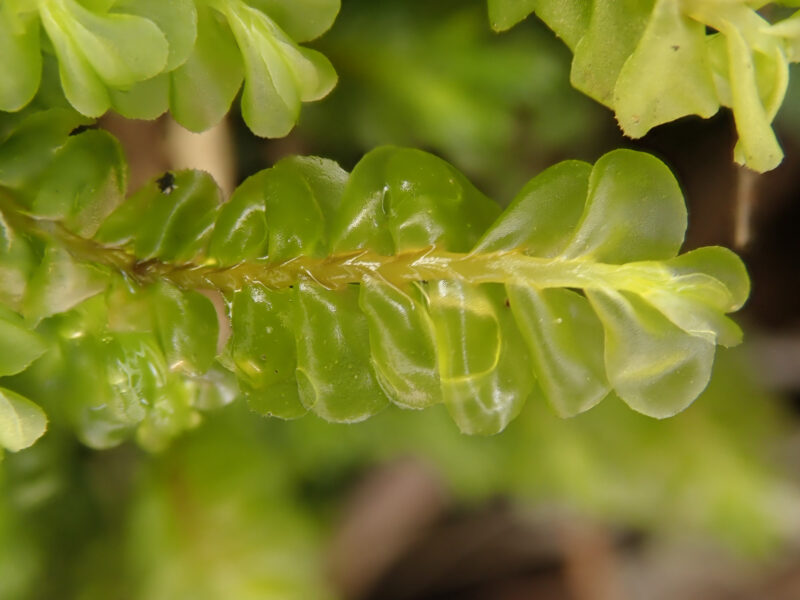Identification notes
This medium-sized Plagiochila is not particularly fussy about where it grows nor the geology it is associated with. It has the typical Plagiochila look, with leaves in two rows with obviously long-decurrent bases. Like P. asplenioides, the largest species in the genus, its leaves are obliquely inserted so shoots look quite complanate. However, the leaf insertion line is curved in P. porelloides, which means the leaves do not lie as flat as the larger species – a useful point of differentiation whenever there is any confusion. In fact, sometimes P. porelloides looks more like one of the medium-sized humidity-demanding species, P. spinulosa and B. bifaria. But instead of a few very large teeth on the leaf margins, P. porelloides (as var. porelloides) has a fuzz of numerous tiny teeth.
If you closely examine the shape of the leaf of var. porelloides, you’ll see it is about as wide as long. P. asplenioides, which is usually a larger plant, has leaves that are longer than wide. Search too for whippy-looking flagelliform shoots; P. porelloides has them but they are lacking in P. asplenioides.
Read the Field Guide account









